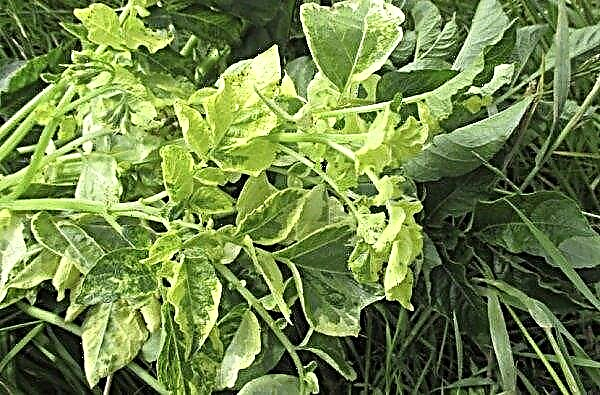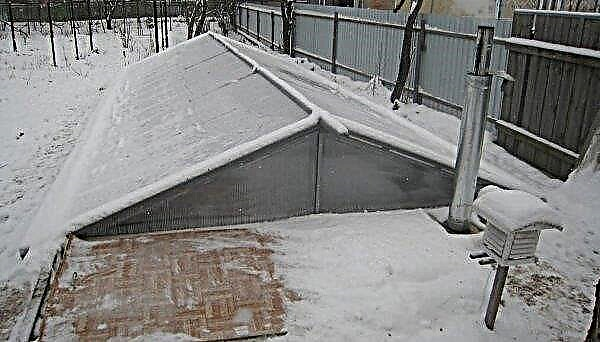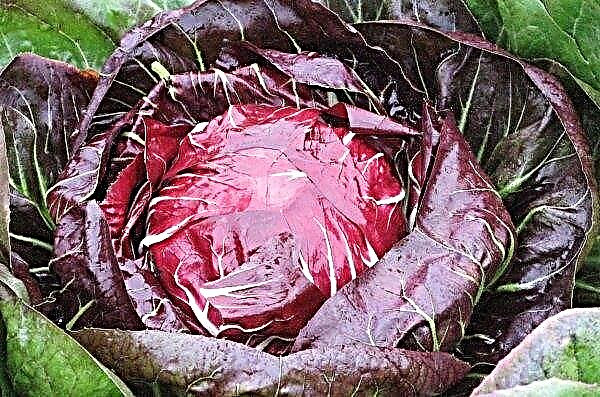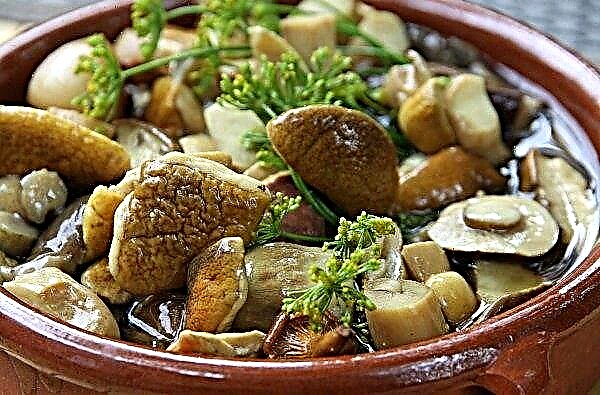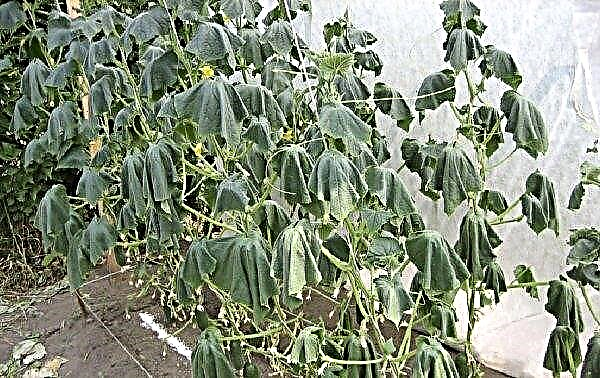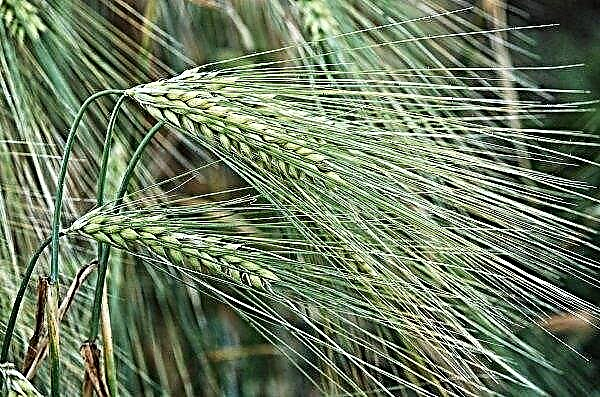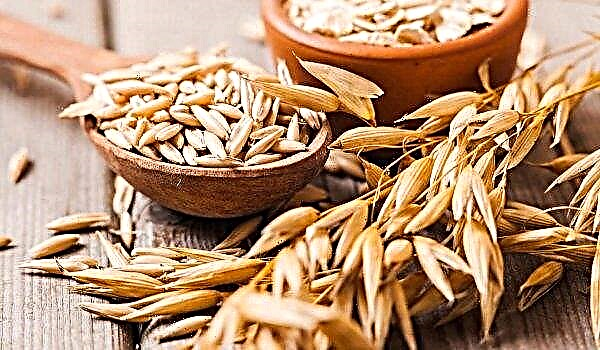A seeder for corn is an indispensable thing that saves time and physical effort to plant corn seeds. Thanks to this technology, vegetable crop productivity is increased. More information on the planter is discussed below.
Did you know? Corn is an annual plant that can grow up to 7 m in height, and this is the height of a two-story cottage.
What is a corn planter?
Planter is a mechanism used to sow seeds into the soil. Before they were invented, sowing was carried out manually, grains were scattered as horizontally and evenly as possible. The advantage of mechanical seeders is a more accurate planting of seeds in depth and distance from each other, which undoubtedly increases productivity and makes the subsequent harrowing procedure unnecessary after sowing. The principle of operation of the planter is that it feeds the seeds into the sowing apparatus, which places them at the desired depth and at the required interval, after which the sowing completes the specially arranged seeding mechanism. When using a planter on unprepared soil or on mulch, disks are installed directly in front of the coulter, which cut the residues from the previous harvest and make landing slots to ease the load on the crawler coulter.
The principle of operation of the planter is that it feeds the seeds into the sowing apparatus, which places them at the desired depth and at the required interval, after which the sowing completes the specially arranged seeding mechanism. When using a planter on unprepared soil or on mulch, disks are installed directly in front of the coulter, which cut the residues from the previous harvest and make landing slots to ease the load on the crawler coulter.
Views
Corn seedlings can be of various types and designs, this is due to the peculiarities of its application, mainly, the size of the plot, farm, where corn is sown. The following are the types of planters.
Important! The sowing rate is regulated in accordance with the instructions for the unit in the range from 25,000 to 100,000 per 1 ha, the sowing depth is from 4 to 20 cm.
Seeder SUPN-8
It has a universal purpose, that is, it can be used for sowing not only corn, but also other grains. Equipped with a dotted pneumatic hinged structure, which makes it possible to sow seeds in rows, at a distance of 50-60 cm. Together with the introduction of grains into the soil, it is able to fertilize crops. SUPN-8 is equipped with 8 sections for sowing, located on the suspension, as well as 4 fertilizer sections designed for fertilizing.
Seeder for walk-behind tractor
The motoblock is a self-propelled device with one axis, in fact it is a kind of mini-tractor, inferior to the latter in size and power. In the case of a walk-behind tractor, the seeder is an additional unit in the form of a hinged element, necessarily equipped with a grain calibrator for the possibility of its universal use.
Did you know? We are used to thinking that corn is yellow. In fact, it happens: white, red, purple, black and even different shades at the same time.
The depth of laying the seeds of this type of seeder has a range from 1 to 5 cm, the distance between the rows is from 15 to 30 cm with the possibility of simultaneous processing from 2 to 4 rows. Corn planter for walk-behind tractor can be either factory-made or home-made.
Mini Tractor Seeder
As already mentioned, a seeder for a mini-tractor is an enlarged copy of a planter for a walk-behind tractor. It is also equipped with a seed calibrator, with appropriate adjustment in accordance with the instructions can be configured for sowing corn. Unlike a seeder for a walk-behind tractor, it is applicable for a larger sowing area, it allows sowing seeds to a slightly greater depth (up to 8 cm) and has a wider range of row spacing - up to 70 cm.
Hand seeder
The easiest to use unit for sowing corn, designed for use on small garden farms. It consists of a hopper for loading seeds, a seed metering sleeve, seed tube, a running gear, including wheels and a frame for attaching other elements of the mechanism.
Important! If the manual seeder is equipped with several seed sleeves, this will allow using it not only for sowing corn, but also for other crops.
Rules and selection criteria for the finished model
When choosing this or that type of seeder and its model, in addition to the area of the sown area, it is necessary to take into account parameters such as the accuracy of sowing in width and depth, with the ability to control these indicators, as well as the simplicity of design, reliability of the unit and its components. Of course, the versatility of the model and the possibility of simultaneous application of fertilizers to the soil play an important role. Finally, the price of the device plays a role. Comparing all these criteria, the importance of each of them in each case, you can choose the best option.
How to make a seeder for corn with your own hands?
An alternative to buying a corn planter can be a homemade planter. Here, in terms of materials and manufacturing methods, folk fantasy is wide. Consider several options for manufacturing a seeder.
Materials and tools for work
To implement home-made manufacture, you need:
- plastic transparent container for grains in the form of a can;
- a bolt, on it during the movement of the seeder the reservoir with seeds rotates;
- a plastic pipe comparable in length to the width of the seed container;
- a metal pipe of a slightly smaller diameter than a plastic one;
- two washers for fixing the tank;
- a cover from a can, here will serve as a cover for a can with seeds;
- aluminum wire;
- wood handle;
- hoe.
Step-by-step manufacturing instructions
Production Instruction:
- Measure accurately the center on the seed container and drill a through hole.
- The lid of the can can serve as a valve to prevent the rash of seeds. To do this, the lid is cut out a little more than the hole for filling the seeds, it should be fixed with an aluminum wire so that during rotation the lid opens and closes freely.
- Place a plastic tube in the center of the can to prevent compression of the can when the bolt is tightened.
- Insert a metal tube inside the plastic tube, this will produce a bearing.
- Insert a bolt, nut into a metal tube and tighten with two washers.
- Using a hot nail, make two holes on the side of the bean hopper. The size of the hole should be equal to the size of the grains of corn.
- Using a wooden handle will make the seeder more convenient to use.
- The chopper will cover the seeds sown with earth. It must be bent and attached to the handle.
There is also a second option for manufacturing a planter of a more complex design, applicable both for manual seeding and using a walk-behind tractor.
Materials for its manufacture are more durable:
- steel sheets 2.5 mm thick for the manufacture of a frame measuring 85 × 78 mm;
- opener
- as a reservoir for seeds - a galvanized steel box;
- plexiglass cover for covering the seed container, furniture hinge and latch;
- as a shaft for sowing - an aluminum tube having a diameter of 28 mm;
- M5 bolts, M6 screws;
- a brush;
- two wheels.

Production Instruction:
- In the sowing shaft, drill 3 rows of holes of different diameters corresponding to the caliber of the seeds.
- Configure the frame according to the size of the seed tank.
- At the bottom, drill holes with a diameter of 28.05 mm where to insert the seed shaft.
- To fix the box for grains with bolts on the frame, a brush that regulates the sowing density with its vertical vibrations relative to the shaft, - under the tank with screws.
- It is necessary to give the desired configuration of a truncated trapezoid tank for seeds and shaft openings.
- Attach the lid with a furniture hinge on top of the tank and equip it with a latch.
Video: how to make a do-it-yourself corn seeder
When sowing manually without a walk-behind tractor, it is also necessary to independently make furrows for sowing grains. However, even when working with a manual seeder, gardener forces are significantly saved, labor productivity and sowing quality are increased, and a homemade corn seeder will save money on the purchase of a factory unit.


